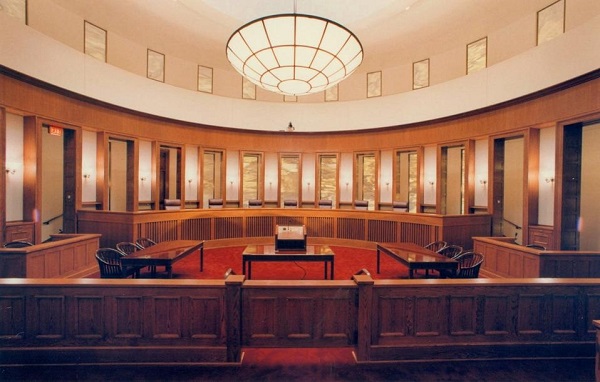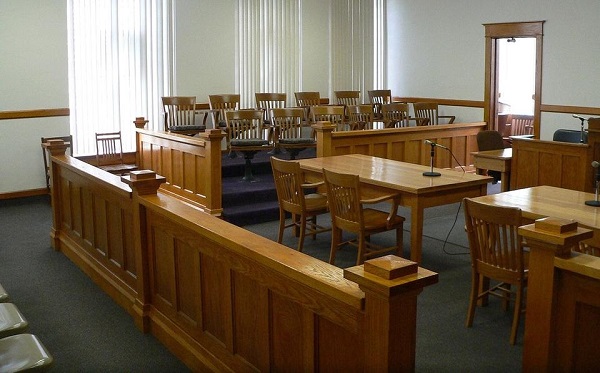Courtrooms
The courtroom is the focal point of courthouse activity and provides an impartial setting for conducting most legal proceedings. The size and interior configuration of each courtroom may be based on the specific requirements of the types of hearings and trials to be held in that courtroom.
 |
Minnesota Supreme Court |
Appellate courtrooms are used by a state's supreme court or court of appeals to hear oral arguments or for ceremonial purposes, such as the swearing-in of new attorneys. Because Appellate courts are generally used infrequently, have few spectators and minimal public traffic, they have very different requirements than Trial Courtrooms.
For a more detailed explanation, see Appellate Courts.
 |
Chase County, Nebraska Courtroom |
Trial courtrooms are used for many different types of hearings, formal and informal, including arraignments, preliminary or bond hearings, motion hearings, pretrial or status hearings, docket or calendar calls, jury and non-jury trials, sentencing hearings, and probation violation hearings. Additionally, specialized courtrooms may be used for different types of cases such as criminal, civil, juvenile, etc.
While there has been a general trend toward smaller and specialized hearing rooms and courtrooms, the disadvantage is that these courtrooms cannot adapt to growth or changes in the court's caseload. Large jury courtrooms remain much more flexible by being adaptable to a wider range of functions and needs.
Specialized trial courtrooms include:
- Criminal and Civil Trials (jury and non-jury)
- Juvenile and Family Courts
- Traffic and Arraignment Courts
- High Security
- Small Meeting Rooms
- Video Arraignment
- Preliminary Hearing
- Calendar Call
- Multi-Defendant (Mega-Courtroom)
For a more detailed explanation, see Trial Courts.